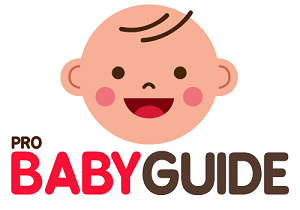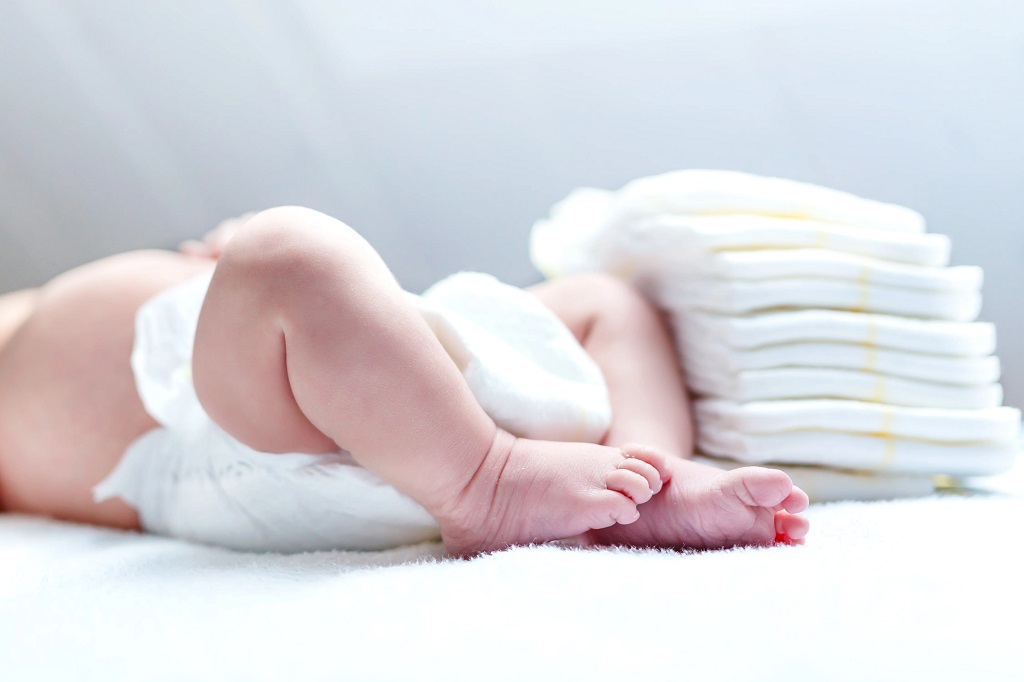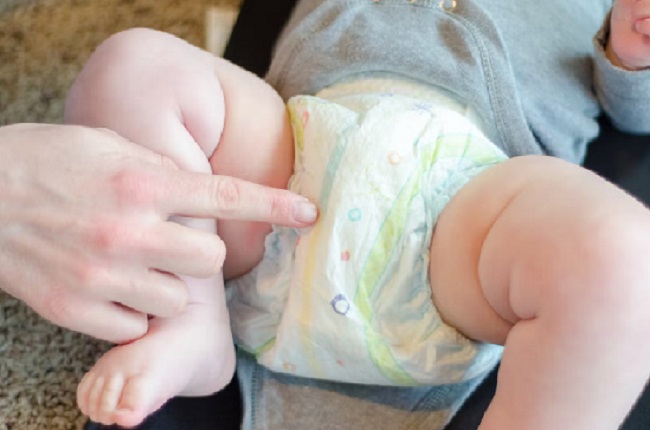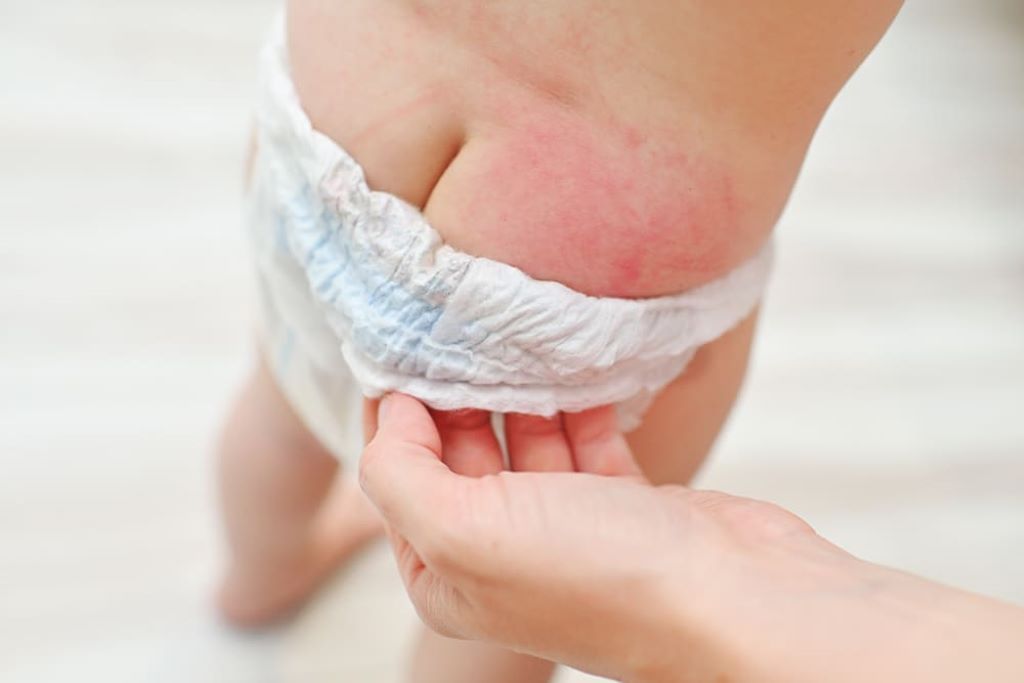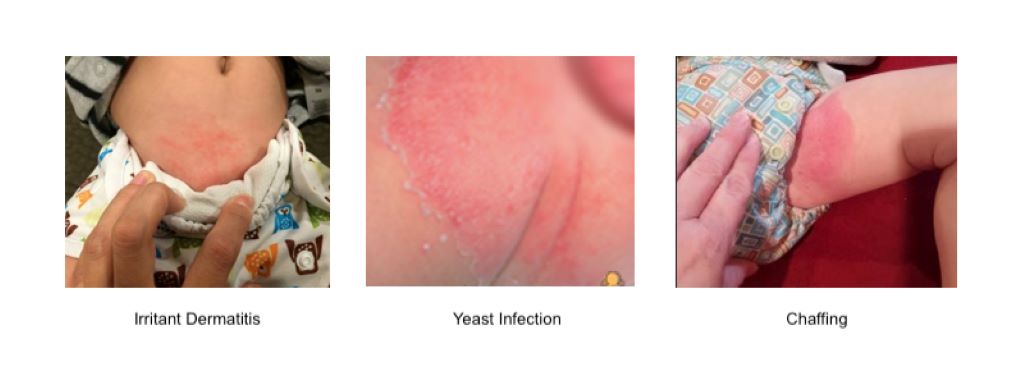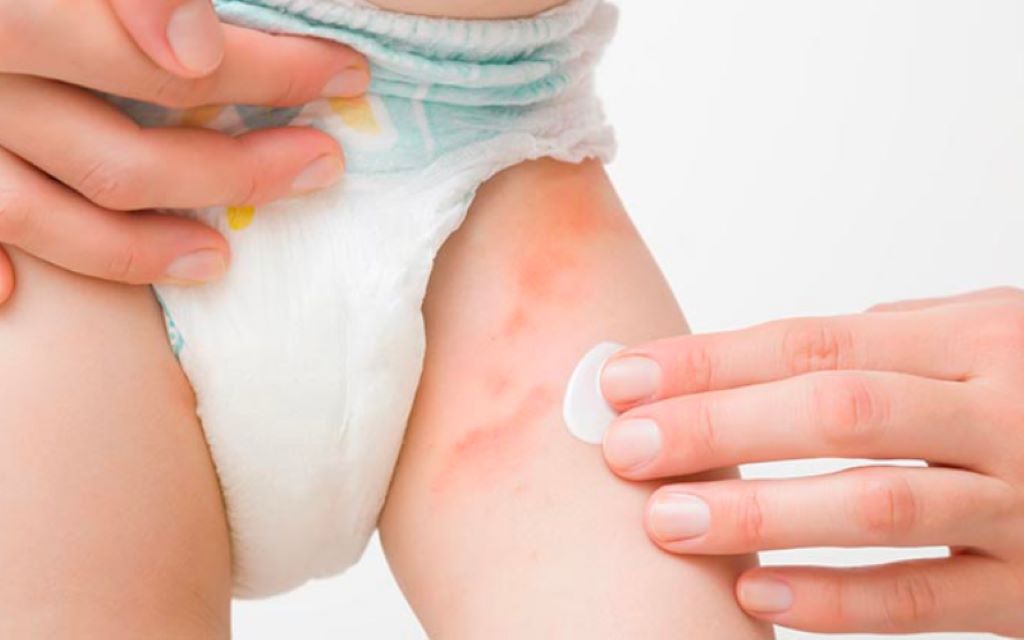Amidst the whirlwind of baby care, understanding the significance of a wet diaper might seem like a minor detail, but it plays a vital role in gauging your little one’s health and well-being. You might wonder, what counts as a wet diaper? Is it merely urine, or does poop count as a wet diaper too? Worry not, as we unravel the mysteries surrounding this essential aspect of diaper duty.
In this blog, we’ll explore the intricacies of what is considered a wet diaper, delving into the nuances that every caretaker should know. So, let’s embark on this enlightening journey together and discover the insights that will revolutionize your wet dirty diaper chart tracking forever! Desire to become a diaper-changing pro? Stay tuned for valuable tips and a better understanding of what is a wet diaper. The action begins now!
What is Considered a Wet Diaper
A wet diaper refers to a diaper that has been soiled with urine. It is essential for infants and toddlers who wear diapers to monitor their diaper status regularly to ensure they are kept dry and comfortable. Wet diapers are a natural part of a baby’s life, but excessive wetness can lead to discomfort and even diaper rash if not addressed promptly.
Importance of Monitoring Diaper Wetness
Monitoring diaper wetness is crucial for several reasons. Firstly, it helps to keep the baby comfortable and happy. A wet diaper can cause irritation and discomfort, leading to frequent crying and restlessness. Secondly, leaving a wet diaper for too long can result in diaper rash, a common skin condition that can be painful for the baby. By checking and changing diapers promptly, caregivers can prevent such issues and maintain the baby’s overall well-being.
Does Poop Count as a Wet Diaper?
Yes, poop counts as a wet diaper. A wet diaper is any diaper that is soiled with urine or feces. While urine is typically the main culprit of wet diapers, poop can also make a diaper wet. This is because poop contains water, which can seep through the diaper and cause it to become wet. Poop can also contain bacteria, which can cause the diaper to smell bad.
If your child has pooped in their diaper, changing them as soon as possible is important. This will help to prevent the poop from leaking out of the diaper and causing skin irritation. It will also help to prevent the spread of bacteria.
Here are some tips for changing a poopy diaper:
- Wash your hands thoroughly with soap and water before and after changing the diaper.
- Place a disposable diaper liner on the changing table or bed.
- Remove the dirty diaper and place it in a sealed bag.
- Clean the baby’s bottom with a warm, wet washcloth.
- Apply a diaper rash cream if necessary.
- Put on a clean diaper.
If you use cloth diapers, you must rinse them out immediately after they are soiled. You can then wash them in the machine according to the manufacturer’s instructions.
How to Check for Wet Diapers
Feeling the Diaper from the Outside
One of the easiest ways to check if a diaper is wet is by gently feeling it outside. Place your hand on the front and back of the diaper and see if it feels fuller than usual. Infants and toddlers have different wetting patterns, so being familiar with your baby’s habits is essential.
Visual Indicators of Wetness
Some diapers come with wetness indicators, which change color when the diaper is wet. These indicators can be incredibly helpful for busy parents who may not have the time to check diapers constantly. If your baby’s diaper has a wetness indicator, it can take the guesswork out of diaper checks.
Wet Dirty Diaper Chart
Tracking your child’s diaper output can help monitor their overall health and development. It can also help you to identify any potential problems early on. Here is a wet and dirty diaper chart:
| Age | Wet Diapers | Dirty Diapers |
| 0-3 months | 4-6 | 1-2 |
| 3-6 months | 6-8 | 2-3 |
| 6-12 months | 8-10 | 3-4 |
| 12-18 months | 7-9 | 2-3 |
| 18-24 months | 6-8 | 1-2 |
Notes:
- These are just general guidelines, and your child’s number of wet and dirty diapers may vary.
- If you are concerned about your child’s diaper output, please talk to your pediatrician.
Signs of a Wet Diaper
Baby Discomfort and Crying
A clear sign of a wet diaper is when the baby becomes restless and starts crying. Babies communicate through crying, and discomfort from a wet diaper is one of the common reasons for their tears. Checking the diaper promptly and changing it can soothe the baby and make them feel more comfortable.
Changes in Diaper Weight
Another way to determine if a diaper is wet is by gauging its weight. By becoming familiar with the weight of dry diapers, you can quickly tell if it’s time for a change. Remember that infants’ diapers may be lighter than those of older babies.
Diaper Rash and Irritation
Prolonged exposure to wetness can lead to diaper rash and skin irritation. If you notice redness or soreness in the diaper area, it’s likely time for a change. Regularly changing diapers can help prevent diaper rash and keep the baby’s skin healthy.
Detecting Wet Diapers: Frequency and Analysis
How Often to Change Diapers
The frequency of diaper changes depends on the age of the baby. Newborns may require more frequent changes, up to 10 or more per day, while older babies usually undergo 6-8 diaper changes daily. Keeping the baby’s diaper dry can also help prevent diaper rash.
Wet Diaper Age Range
As the baby grows, bladder capacity increases, leading to less frequent wetting. Understanding the typical wetting patterns for different age ranges can help caregivers plan their diaper-changing routine accordingly.
Wet Diaper Odor and Color
Sometimes, a wet diaper may have a distinct odor, which can be an additional clue for parents to detect wetness. Additionally, the indicator’s color on some diapers may change when wet. Being attentive to these signs can assist in ensuring the baby’s comfort.
Tips for Changing Wet Diapers
Proper Diapering Techniques
Proper diapering is essential for preventing leaks and ensuring the baby’s skin stays dry and healthy. Ensure the diaper is snug but not too tight and the leg cuffs are properly positioned to prevent leakage.
Addressing Wet Diaper Discomfort
If your baby seems uncomfortable during diaper changes, try to distract them with toys or gentle words to make the process more enjoyable. This can help ease their anxiety and make diaper changing a smoother experience for both of you.
Preventing Diaper Leaks
Diaper leaks can be messy and inconvenient. Choose the right diaper size to prevent leaks and ensure it is secured properly around the baby’s waist and legs.
Wet Diapers for Toddlers and Older Children
Toddlers may have different ways of expressing discomfort from wet diapers than infants. Look for signs of irritability, frequent tugging at their diaper, or verbal expressions of discomfort.
Older children may be more vocal about their discomfort from wet diapers. Ensure they know the importance of staying dry and encourage them to communicate when they need a diaper change.
Welcome to our review of the top 5 wet diapers for toddlers and older children! As parents, we understand the importance of choosing the right diaper for your little ones.
Table of Reviewed Products:
| Product Name | Amazon Rating | Price |
| Pampers Swaddlers | 4.8/5 | Price on Amazon |
| Huggies Little Movers | 4.7/5 | Price on Amazon |
| Luvs Triple Leakguards | 4.6/5 | Price on Amazon |
| Honest Diapers | 4.5/5 | Price on Amazon |
| Seventh Generation | 4.4/5 | Price on Amazon |
1. Pampers Swaddlers:
Features:
- Pampers Swaddlers are designed for supreme comfort and protection. The soft, quilted liner pulls wetness away from your child’s skin, keeping them dry and happy.
- The wetness indicator is a convenient feature that lets you know when it’s time for a diaper change, saving you from unnecessary checks.
- These diapers are equipped with air channels, promoting airflow to keep your little one’s skin fresh and healthy.
- Available in various sizes, ensuring a snug fit as your child grows.
Analysis: Pampers Swaddlers have earned their reputation as one of the best diapers on the market. Parents rave about their absorbency and how they keep their babies dry all night. The wetness indicator is especially handy for new parents, making diaper changes a breeze. While the price might be slightly higher than some other brands, the quality and comfort they offer make them worth every penny.
Pros:
- Excellent absorbency for all-night protection.
- Wetness indicator for easy diaper change.
- Soft and gentle on your baby’s skin.
- Air channels for improved ventilation.
- Snug fit for different growth stages.
Cons:
- Slightly higher price point.
2. Huggies Little Movers:
Features:
- Huggies Little Movers are designed to keep up with your active toddlers, providing excellent leakage protection during playtime and on-the-go adventures.
- The contoured shape and double-grip strips ensure a secure fit that moves with your child, preventing any uncomfortable sagging.
- These diapers feature a dry-touch liner that keeps wetness away from your little one’s skin, promoting a rash-free experience.
- The pocketed-back waistband prevents any blowouts, providing you with peace of mind.
Analysis: Huggies Little Movers are the go-to choice for parents with active toddlers. They offer great mobility without compromising on protection. The secure fit and reliable leakage prevention make them ideal for long journeys and playdates. Some parents have mentioned that the waistband might leave slight marks, so it’s essential to adjust the fit accordingly.
Pros:
- Perfect for active toddlers on the move.
- Contoured shape for a secure fit.
- A dry-touch liner keeps skin dry and healthy.
- Pocketed-back waistband for added protection.
Cons:
- The waistband might leave slight marks.
3. Luvs Triple Leakguards:
Features:
- Luvs Triple Leakguards are known for their incredible leakage protection, making them perfect for heavy wetters and overnight use.
- The ultra-absorbent core quickly locks away wetness, keeping your child dry and comfortable for an extended period.
- These diapers come with large, refastenable stretch tabs that ensure a snug fit, allowing for easy adjustments.
- The contoured shape and leg gathers provide a leak-free experience, reducing the chances of any accidents.
Analysis: Luvs Triple Leakguards offer unbeatable value for money with their impressive leak protection. Parents appreciate their ability to hold up well during nighttime use, eliminating the need for frequent changes. The large stretch tabs allow for a customizable fit, ensuring your child’s comfort. However, some parents have mentioned a slightly thinner feel compared to other brands.
Pros:
- Excellent leakage protection, especially for heavy wetters.
- Ultra-absorbent core for extended dryness.
- Refastenable stretch tabs for a custom fit.
- Contoured shape and leg gathers prevent leaks.
Cons:
- Diapers may feel slightly thinner.
4. Honest Diapers:
Features:
- Honest Diapers are made from plant-based, sustainable materials, making them an environmentally friendly choice for conscious parents.
- The super-absorbent core keeps wetness away from your baby’s skin, preventing any irritation or discomfort.
- These diapers are hypoallergenic and free from harmful chemicals, ensuring they are gentle on sensitive skin.
- The cute and stylish designs add a fun touch to diaper changing moments.
Analysis: Honest Diapers are a hit among parents who prioritize eco-friendly and non-toxic options. The use of sustainable materials is commendable, and the diapers perform remarkably well in terms of absorbency and fit. Some users have noted occasional leaks during nighttime use, so it’s essential to check the diaper capacity during extended wear.
Pros:
- Environmentally friendly with plant-based materials.
- Super-absorbent core for dryness.
- Hypoallergenic and chemical-free for sensitive skin.
- Adorable and stylish designs.
Cons:
- Occasional leaks during nighttime use.
5. Seventh Generation:
Features:
- Seventh Generation diapers are free from chlorine, lotions, and fragrances, providing a natural and gentle experience for your child’s skin.
- The quilted liner and high-capacity core keep your baby dry and comfortable throughout the day.
- They come with a stretchy back gather and leg elastics to ensure a secure fit without any leaks.
- These diapers are made from sustainably sourced materials, making them an eco-conscious choice.
Analysis: Seventh Generation diapers are a popular option for parents seeking chemical-free alternatives. They excel in keeping babies dry and content without causing any skin irritation. The eco-friendly aspect is highly appreciated, and the diapers’ performance is generally reliable. However, some users have mentioned that the fit might not be as snug for babies with a leaner build.
Pros:
- Free from chlorine, lotions, and fragrances.
- Quilted liner and high-capacity core for dryness.
- Stretchy back gather and leg elastics for a secure fit.
- Made from sustainably sourced materials.
Cons:
- Fit might not be as snug for leaner babies.
Monitoring and Managing Wet Diapers
Diaper Wetness Scale
Developing a diaper wetness scale can help you keep track of your baby’s diaper status throughout the day. This can be particularly useful if you’re trying to identify patterns or potential issues.
How to Relieve Wet Diaper Sensation
If your baby seems bothered by the sensation of a wet diaper, consider using baby powder or diaper cream during changes to soothe their skin and provide relief.
Solutions for Wet Diapers in Adults
For adults experiencing wet diaper discomfort, it’s crucial to address any underlying health issues that may be contributing to the problem. Seeking medical advice can help identify and manage the root cause.
Choosing the Right Diapers
Organic Wet Diaper Options
Organic diapers are a popular choice for environmentally conscious parents. These diapers are made from natural and sustainable materials, reducing their environmental impact.
Hypoallergenic Wet Diapers
Babies with sensitive skin may benefit from hypoallergenic diapers, less likely to cause irritation or allergic reactions.
Affordable and Effective Choices
Various affordable and effective diaper options are available in the market, catering to different needs and budgets. Finding a brand that suits your baby’s needs and provides reliable performance is essential.
Conclusion
In the realm of parenting, understanding what constitutes a wet diaper is pivotal to ensuring your little one’s health and well-being. We’ve delved into the depths of this seemingly simple yet significant topic, unraveling the enigmatic aspects that often leave parents wondering. From deciphering whether poop counts as a wet diaper to discerning what counts as a wet diaper, we’ve covered it all.
Now equipped with this newfound knowledge, you can confidently navigate the wet dirty diaper chart, keeping a keen eye on your baby’s diaper changes. Gone are the days of uncertainty, as you embrace the assurance of knowing exactly what is a wet diaper.
So, waste no time – put this insight into action and ensure your bundle of joy remains happy, healthy, and comfortable. Happy parenting!
FAQs
Q: How often should I change my newborn’s wet diaper?
A: Newborns may need up to 10 diaper changes per day due to their frequent wetting patterns.
Q: What can I do to prevent diaper leaks?
A: To prevent leaks, ensure the diaper fits properly and is securely fastened around the waist and legs.
Q: Are organic diapers more eco-friendly?
A: Organic diapers are made from natural and sustainable materials, making them a greener choice.
Q: How can I soothe my baby during diaper changes?
A: Distract your baby with toys or gentle words to make the diaper-changing process more enjoyable.
Q: When should I consider using diaper cream for my baby?
A: Diaper cream can be used when your baby experiences discomfort from diaper wetness to soothe their skin.
